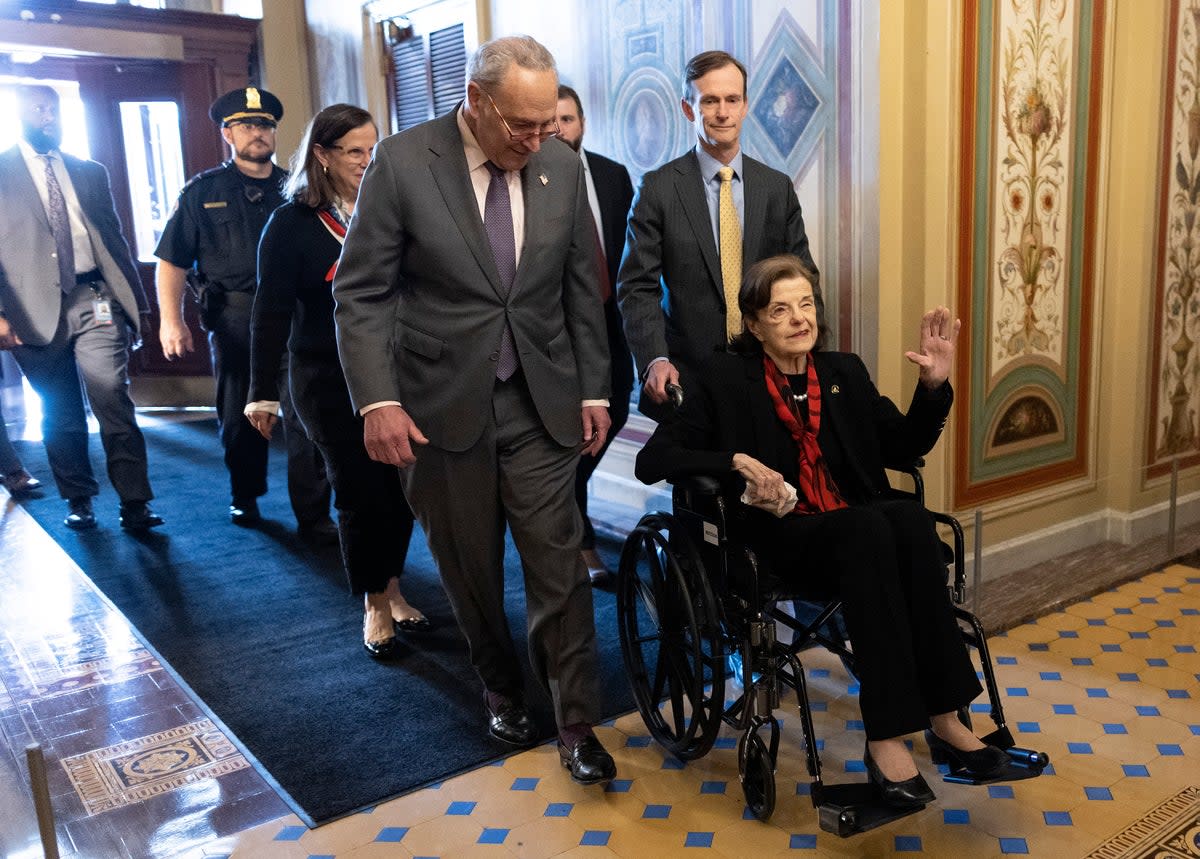Dianne Feinstein’s office confirms health complications are broader than previously known

The office of US Senator Dianne Feinstein has confirmed that the California Democrat was suffering worse health complications from a recent shingles case than she had previously claimed.
A spokesperson for Sen Feinstein, 89, told CNN Ms Feinstein, the Senate’s oldest lawmaker, experienced Ramsay Hunt syndrome and encephalitis as part of the diagnosis.
“While the encephalitis resolved itself shortly after she was released from the hospital in March, she continues to have complications from Ramsay Hunt syndrome,” the spokesperson said on Thursday.
Ramsay Hunt syndrome can occur when a case of shingles affects the facial nerve close to the eye, sometimes causing facial paralysis and hearing loss, according to the Mayo Clinic.
Earlier in the day, Sen Feinstein claimed to CNN she didn’t have encephalitis, saying, “It was really a bad flu.”
The California senator’s health and mental fitness have long been subjects of scrutiny. Some of her colleagues have called on her to resign.
She returned to the Senate last week after being absent for 10 weeks as she recovered from shingles. Upon returning to the Senate, Sen Feinstein told reporters that she had never left.
“No, I haven’t been gone,” she said to LA Times’s Ben Oreskes when asked how her Senate colleagues have responded to her return, reported Slate.
Mr Oreskes then asked her whether she had been working from home.
“No, I’ve been here. I’ve been voting,” she said. “Please, you either know or don’t know.”
The absence of Sen Feinstein halted the work of the Senate judiciary committee, where Republicans demanded the California Democrat either return to work or resign from the Senate, rather than allow a temporary replacement.
The infighting halted the confirmation of federal judges, one of the main ways Democrats can cement their influence in a divided Congress.
As The Independent has reported, Sen Feinstein is part of a generation of elderly leaders at the top of the US political system, leading critics to argue more should be done to make elected office accessible to young people.
The present Congress contains the second-oldest Senate and third-oldest House in US history. Generationally, the US population fits roughly into four, equal-sized blocks of about 20 to 25 per cent: ages 0 to 18, 19 to 34, 35 to 54, and 55-plus.
The composition of Congress, meanwhile, is drastically tipped toward the elder part of that range, with the median House member aged 57.9 and the median senator aged 65.3.
According to Professor Munger, Kevin Munger, assistant professor of political science and social data analytics at Pennsylvania State University, author of Generation Gap: Why the Baby Boomers Still Dominate American Politics and Culture, the age of America’s most senior politicians – Sen Chuck Schumer is 71, Sen Mitch McConnell is 81 – often means that issues that matter to other generations don’t get top billing, leading both to disaffection and to bigger-picture existential issues, like a lack of serious climate legislation or the impending funding crisis of social security.
“It’s been clear that because of the size of the boomer generation, at a certain point, we were either going to have to raise taxes on the workforce or cut the benefits,” he said.
“We didn’t do either of those things. Sometime in the 2030s, it’s going to run out. They’re not going to cut benefits to boomers. Instead, younger generations are going to have to fully fund this obvious 30-year shortfall.”
In the case of social security in particular, many of the leaders deciding on the issue are current recipients, while those younger generations who will likely pay more or get less in the future aren’t represented in office. A similar problem arises with climate change: the leaders holding up urgent action on the climate likely will not be alive to see the very worst impacts of their inaction.
“The issues that matter to younger generations don’t get on the agenda at all,” Prof Munger added.


